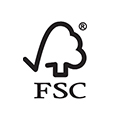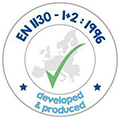Sleep is a precious commodity, especially when it comes to midnight feedings, diaper changes, and soothing fussy babies. For many parents, the idea of keeping their newborn close at night feels instinctive—a way to ease anxiety and nurture that fragile bond. But, how can you stay connected to your baby while prioritizing their safety?
Enter the co-sleeper, a game-changing solution that bridges the gap between closeness and caution.
Unlike bed-sharing, which carries well-documented risks, a co-sleeper is a separate sleeping space that can be safely placed next to your bed. It lets you reach over and comfort your baby without the dangers of loose blankets, pillows, or accidental rolling.
In this guide, we’ll unravel the myths, break down the safety essentials, and help you decide if a co-sleeper is the right choice for your family.
The Difference Between Co-Sleeping and Co Sleepers
As a new parent who has just welcomed a little angel, you may often see the words co-sleeping and co-sleepers in parenting articles. Although they have similar names, the actual difference is like that between a crib and a big bed – one is a sleeping tool designed for babies, and the other is a choice of parenting style.
Today, we will use the most straightforward language to help you sort out the ins and outs of the two.
Co-Sleeping (Bed-Sharing): A Controversial Practice
When you hear that “a friend’s baby has been sleeping in a big bed with his parents since he was young”, this is a typical co-sleeping.
This method is very common around the world. For example, in Asian families, eight out of ten babies may have had the experience of sleeping in the same bed with their parents. It makes night feeding more convenient, and you can comfort the baby by reaching out when the baby cries.
However, a practice that the American Academy of Pediatrics (AAP) strongly discourages due to suffocation and SIDS risks. Because parents cannot predict their own behavior after falling asleep, such as whether they will roll over and squeeze the baby, adult bedding (pillows, blankets) can easily cover the baby’s face.
The AAP position is that room-sharing without bed-sharing is recommended for at least the first 6 months. Keep your baby’s sleeping area separate but close to your bed.
Co Sleeper: A Safe, Separate Space
Co-sleepers are more like an upgraded version of the baby’s bed. It looks like a small cradle and can be installed close to the edge of the big bed. It has its own firm mattress, breathable walls (usually mesh), and safety rails to prevent falls.
This design not only gives the baby his own safe space, but also allows you to see his little face as soon as you turn your head. You can reach over and pat your baby’s back at 3 a.m.—without lifting them into your bed.
Sleeping in separate beds from your baby from an early age does not make them feel insecure. The baby’s sense of security comes from a timely response, not physical distance. Even if they sleep in an independent crib, as long as you comfort them immediately when they cry, you can also establish a close attachment.
Benefits of Using a Co Sleeper

As a “veteran” who has experienced countless sleepless nights, I deeply understand the anxiety of new parents about the safety of their baby’s sleep. The seemingly simple design of Co-Sleeper actually hides many clever ideas that make parenting easier.
Easier Nighttime Feedings
After feeding late at night, you are too sleepy to open your eyes. If your baby sleeps in an independent crib at this time, repeatedly holding and putting the baby may cause sore arms and fatigue.
The co-sleeper, which meets safety standards, has a three-sided guardrail + breathable mesh design, which not only avoids the risk of adults turning over and pressing the baby, but also allows mothers to reach out and pat and comfort the baby.
Especially for mothers who have undergone cesarean section or lumbar muscle strain, this “zero bending” design can effectively reduce physical strain. Formula-fed babies benefit too—prepping bottles becomes quicker when your little one is within arm’s reach.
Better Sleep for Everyone
The constant back-and-forth to a crib can fragment sleep for both parent and baby. Studies show that breastfeeding mothers who use a co-sleeper sleep an average of 47 minutes more per night and have more consolidated sleep compared to those using standalone bassinets.
Because it keeps the baby and mother “at arm’s length,” there is no need to get up to turn on the light, get out of bed to hold the baby, and breastfeeding can be completed sideways. This design is especially suitable for families with insufficient milk and frequent night feedings, or for families with twins.
In addition, a co-sleeper minimizes disruptions, allowing you to soothe your baby with a gentle touch or pacifier reinsertion before full wakefulness sets in.
Enhanced Bonding Without Risks
The first 6 months after the baby is born are in the “symbiotic period“, and the baby is highly dependent on the mother’s smell and body temperature.
Co-sleeper allows the baby to feel the breathing rhythm and slight sounds of the parents all night long. This “close and distant” state is actually the most in line with the psychological needs of infants and young children.
When the baby wakes up at night, the parents can respond with a pat or whisper at first time. This “always online” sense of security is the basis for establishing a healthy attachment relationship.
Gentle Transition to Cultivate Sleeping Habits
Co-sleeper is a “preparatory course” for sleeping in separate beds. Its independent sleeping space allows babies to adapt to “having their own bed” from an early age, but also gain a sense of security through close visual and auditory connections.
After the baby is 6 months old, just move the co-sleeper away gradually to naturally transition to an independent crib, which is much less crying and protesting than suddenly sleeping in separate beds.
Are Co Sleepers Safe? Safety Considerations & Guidelines
In fact, co-sleepers that meet safety standards and are used correctly can be a safer choice than traditional large beds.
Why say that? The three-sided guardrail forms a protective circle, which can prevent adults from rolling over and pressing the baby, and prevent the baby from rolling off the bed. The hard mattress with an inclination angle of ≤5 degrees + breathable mesh reduces the risk of the bedding covering the mouth and nose.
What the AAP Says
The American Academy of Pediatrics (AAP) discourages bed-sharing but supports room-sharing for at least the first six months. Co-sleepers align with this guidance if they meet two criteria:
- The baby has a separate, flat, firm sleep surface.
- The co-sleeper attaches securely to the adult bed with no gaps.
A 2022 study in Pediatrics found that when used correctly, co-sleepers reduce the risk of suffocation compared to bed-sharing. However, improper use, like placing the co-sleeper on a soft mattress or adding loose blankets, can negate these benefits.
Critical Safety Rules
Secure Attachment: Test the co-sleeper’s connection to your bed nightly. There should be no gaps wider than a pencil’s width where a baby could become trapped.
Bare is Best: Use only a fitted sheet designed for the co-sleeper’s mattress. Do not put anything in the sleeper (including pillows, dolls, bumper pads).
Monitor Weight Limits: Most co-sleepers max out at 15–20 lbs. Transition to a crib once your baby approaches this limit or starts pushing up on their hands.
Use certified models: Always choose co-sleepers certified by ASTM International or the Juvenile Products Manufacturers Association (JPMA).
Never Place a Co-Sleeper on a Soft Surface: Never set it on a couch, waterbed, or adult mattress that sags.
Focus on Developmental Milestones: Rolling over or pulling up signals it’s time to move to a crib—even if your baby hasn’t hit the weight limit.
How Long Can a Baby Be in a Co Sleeper?
Official advice: Golden period for safe use
✅ Most recommended use period: 0-6 months (or weight ≤ 9kg)
✅ Maximum use period: no more than 9 months (or weight ≤ 11kg)
⚠️ Signals to stop using: When the baby can support the upper body with his hands (usually 4-6 months) or tries to stand, sleeping in the same bed becomes unsafe, even if their weight is below the upper limit. These actions increase the risk of tipping over, getting trapped, or climbing out.
(Guide to Use in Stages)
| Developmental Stage | Usage Recommendations | Güvenlik Riskleri |
| 0-3 months (neonatal period) | 24-hour use Note: Put the sleeper back in time after feeding at night | Spitting up may cause choking, so you need to sleep on your back. |
| 4-6 months (rolling period) | – Can continue to use for daytime naps – If the baby frequently turns over at night, it is recommended to transition to a crib. | Bumping into the guardrail/getting your limbs stuck when turning over. |
| 7-9 months (sitting and crawling period) | – Only use it briefly during the day – Remove the guardrail and use it as a playpen | May climb over the guardrail when standing up. |
How to Transition from Co Sleeping to Crib?

Suddenly changing the sleeping environment can easily cause resistance, try these gentle transition methods:
Start Early, Go Slow
Don’t wait until the last minute. Begin the transition 2–3 weeks before your baby hits the co-sleeper’s weight or mobility limits. Start with naps in the crib to build familiarity. The daytime environment feels less intimidating, and success here boosts confidence for nighttime.
Recreate the Co-Sleeper Vibe
Babies thrive on routine. Use the same sleep sack, white noise machine, or bedtime song they associate with the co-sleeper. If the co-sleeper had mesh sides, temporarily attach breathable mesh liners to the crib rails for visual continuity.
The “Sidecar” Method
For hesitant babies, place the crib directly next to your bed (without attaching it) for a few nights. Let them nap or play in it while you sit nearby. Gradually move the crib farther away each night until it’s in its final spot.
Handle Regressions with Grace
It’s normal for babies to protest the change. If they wake frequently, offer comfort without reverting to the co-sleeper. Sit by the crib, sing softly, or place a hand on their chest until they settle.
Different Types of Co Sleepers
1. Bedside Co-Sleepers
Design: Attaches securely to the adult bed frame, aligning heights perfectly.
Best For: Parents who want seamless access to their baby without bed-sharing.
Safety Note: Look for adjustable straps and locking mechanisms to prevent gaps.
2. In-Bed Co-Sleepers
Design: A portable pod placed on the adult bed, creating a separate sleep surface.
Best For: Travel or temporary use (e.g., recovering from a C-section).
Caution: Controversial due to suffocation risks if placed on soft mattresses. Always follow the AAP’s warning against bed-sharing.
3. Multi-Functional Co-Sleepers
Design: Converts from a co-sleeper to a standalone bassinet or playard.
Best For: Families needing versatility for small spaces or frequent travel.
Limitation: Heavier and bulkier than basic models.
4. Portable Co-Sleepers
Design: Lightweight, foldable units ideal for grandparents’ homes or vacations.
Best For: Parents who value mobility but still want a safe sleep space.
Trade-Off: Less sturdy than fixed models; check weight limits carefully.
Alternatives to Co Sleepers
Co-sleepers aren’t the only way to keep your baby close while honoring safety. If a co-sleeper doesn’t fit your lifestyle or nursery layout, these alternatives offer similar benefits without compromise:
1. Bedside Cribs
A standalone crib placed inches from your bed, often with a drop-down side for easy access. The advantage is that it longer use (up to 6 months to 2 years), meets AAP safety guidelines. The cons are that it takes up more floor space than a co-sleeper.
2. Taşınabilir beşikler
Lightweight, compact sleepers that can be moved room-to-room or tucked beside your bed. It is Ideal for small spaces or travel; many include breathable mesh siding, but shorter lifespan (typically 0–5 months).
3. Room-Sharing with a Crib
Place a full-size crib in your bedroom, ideally within arm’s reach for nighttime feeds. You don’t need to transition later; it works from birth through toddlerhood. However, less convenient for frequent nighttime soothing.
4. Safe Bed-Sharing Practices (If You Must)
Controversial but Possible: Follow the “Safe Sleep Seven” guidelines (La Leche League):
- Sober, non-smoking parents.
- Baby on a firm mattress with no gaps.
- No pillows or blankets near the baby.
Caution: The AAP still discourages bed-sharing due to suffocation risks.
Çözüm
For many parents, co-sleepers offer a sweet spot: nighttime bonding without the risks of bed-sharing. But like any parenting decision, it’s deeply personal. What works for one family might not fit another.
Trust Your Instincts: You know your baby best. If a co-sleeper eases your anxiety and improves sleep, embrace it. If it adds stress, let it go.
If your baby resists the co-sleeper or outgrows it early, pivot without guilt. Safe alternatives like bedside cribs or bassinets can offer similar benefits.
Önerilen İlgili Makaleler:














